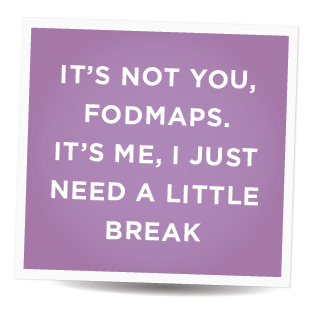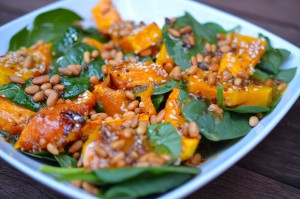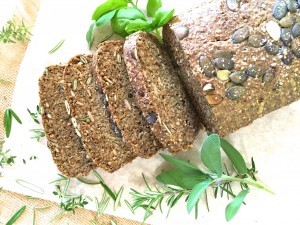
THE SCIENCE
FODMAPs are a collection of short chain carbohydrates and sugar alcohols found naturally in certain foods or as food additives. FODMAPs include fructose (when in excess of glucose), fructans, galacto-oligosaccharides (GOS), lactose and polyols (such as sorbitol and mannitol). While these carbs are not readily absorbed my most people, in some (those like myself with an intolerance), they lead to severe symptoms of digestive distress and affect the absorption of food nutrients.
FODMAP is an acronym that stands for:
F
Fermentable – i.e., they are broken down (or fermented) by bacteria in the large bowel
O
Oligosaccharides – “oligo” means “few” and “saccharide” means sugar. Thus, these molecules are made up of individual sugars linked in a chain.
D
Disaccharides – “di” means two (so this is a double sugar molecule)
M
Monosaccharides – “mono” means single (so this is a single-sugar molecule)
A
And
P
Polyols – these are sugar alcohols (but they don’t lead to intoxication)
When those with FODMAP insensitivity consume foods and/or drinks high in FODMAPs, these carbs, which are poorly absorbed in the small intestine, pass through to the large intestine, where:
1. The FODMAPs are readily fermented by bacteria in the large bowel, leading to gas production and/or
2. The FODMAPs, which are highly osmotic (i.e., they attract water into the large bowel), alter bowel movements
These two processes can trigger symptoms associated with “Irritable Bowel Syndrome” (or IBS) including excess wind, abdominal pain, bloating and distension, constipation or diarrhoea, or (the best) a combination of both.
THE LOW FODMAP DIET
In 1999, an amazing Aussie by the name of Dr. Sue Shepherd developed the low FODMAP diet. She and a team of dedicated dieticians at Monash University have demonstrated, through their pioneering research, that limiting dietary FODMAPs is an effective treatment for people who suffer symptoms of IBS. The low FODMAP diet has been published in international medical journals and is now accepted and recommended, both by natural health experts as well as by mainstream specialists, as one of the most effective dietary therapies for IBS. The Low FODMAP diet has two phases. The first (awful yet temporary) phase generally involves a strict restriction of all high FODMAP foods.
This phase should be followed for 6-8 weeks only, as it is incredibly restrictive and can potentially lead to nutritional deficiencies, especially if Vegan. After this initial phase, an expert dietician should be consulted for a review appointment to learn the second phase. The second phase is where the diet is liberalised and altered to suit each individual – where the type and amount of FODMAPs are identified so that a longer-term diet can be established. The FODMAP Friendly Vegan recipes are designed for the second phase of the low FODMAP diet, once you have identified (or at least are somewhat familiar with) your triggers and have consulted with an experienced healthcare professional.
WHAT FOODS ARE HIGH IN FODMAPS?
Foods that are high in FODMAPs include most dairy products, certain fruits (including apples, pears, cherries, raspberries, watermelons, stone fruit, mango), certain vegetables (including artichokes, asparagus, cabbage, garlic, and mushrooms), certain grains (including wheat, rye, barley, and spelt), most legumes (including soybeans), certain sweeteners (including honey and agave nectar), and some food additives (such as chicory root, inulin, and xylitol).
Fortunately, there is an equally long list of fruits, vegetables, grains,
dairy alternatives, sweeteners, and other foods that are low in FODMAPs. See the In my Kitchen section for more.
IS IT ALL DOOM AND GLOOM?
Although there is definitely an initial “why me” period when you are first diagnosed with food intolerances, and a steep learning curve that follows, it’s not hard to put together a varied and balanced vegan low FODMAP diet … it just takes a little planning. Honestly, if it takes a little pre-preparation to bring about blessed long-term relief from digestive discomfort that has been troubling you for years, then the effort is well worth it. There is also a good chance that you will eventually be able to reintroduce some moderate to high FODMAP foods. For example, I am now perfectly fine with activated plain cashews, despite them being a high FODMAP nut.
One of the reasons that the low FODMAP diet is so effective when compared to other diets designed for those with compromised digestive systems (such as GAPs or the alkaline diet), is that it casts a fairly wide net over many potential digestive issues. It eliminates several categories of compounds that, when combined, are responsible for most digestive drama. However, most of us (even those with the most easily disrupted digestion) are only sensitive to one or two of these compounds – in which case you have also eliminated a range of foods that may not actually be problematic for you and that on the contrary, are very healthy. You may find yourself being bored with repetitive meal plans and bland foods without justifiable cause.
Once things have calmed down in tummytown, after the elimination phase of the diet, there’s an opportunity to do some further investigation. You can test your tolerances for different FODMAPs by introducing them one at a time and seeing if symptoms recur. For example, for me, fructose is my nemesis. However, provided I don’t go overboard, I can tolerate most beans and nuts (oligosaccharides and polyols). You might, for example, discover that beans and grains aren’t a problem for you as long as you stay away from dairy. The moral of the story is that we are all individual beings, with a unique digestive system. Rather than rely on information from others about what has and hasn’t worked for them, experiment for yourself. Your body will tell you what it can and can’t have. Rather than work against it and despise it for the symptoms you are experiencing, work with it, nurture it, love it, and nourish it properly. After all, it’s the only place you reside in permanently.


